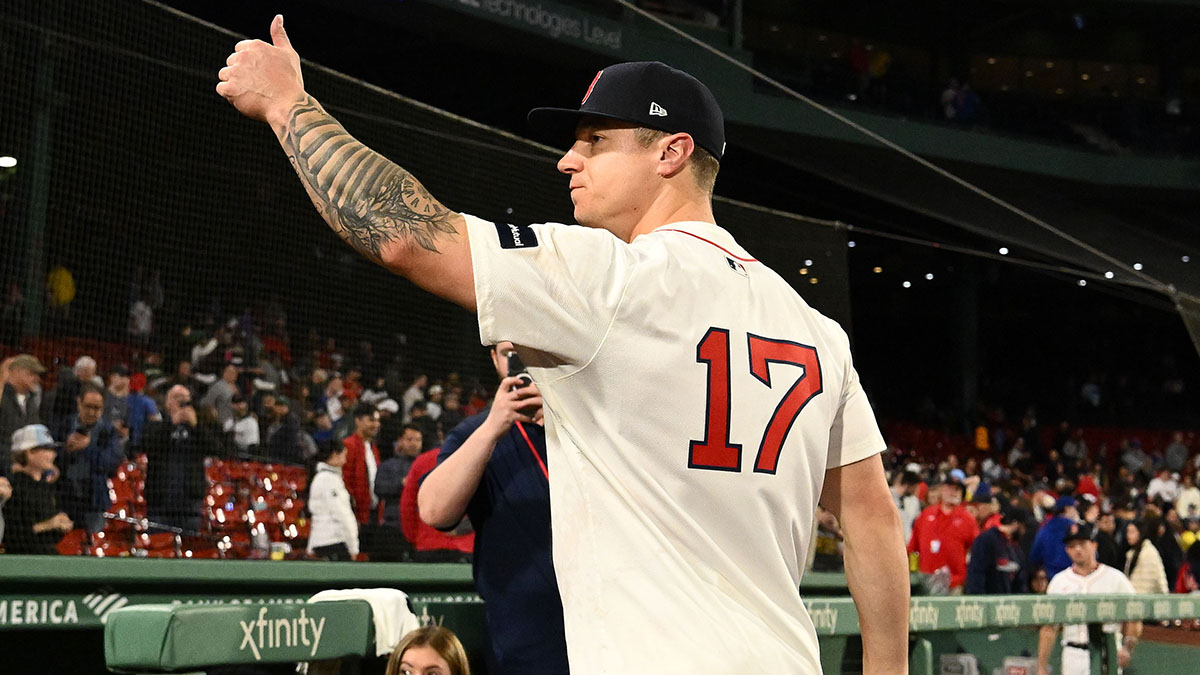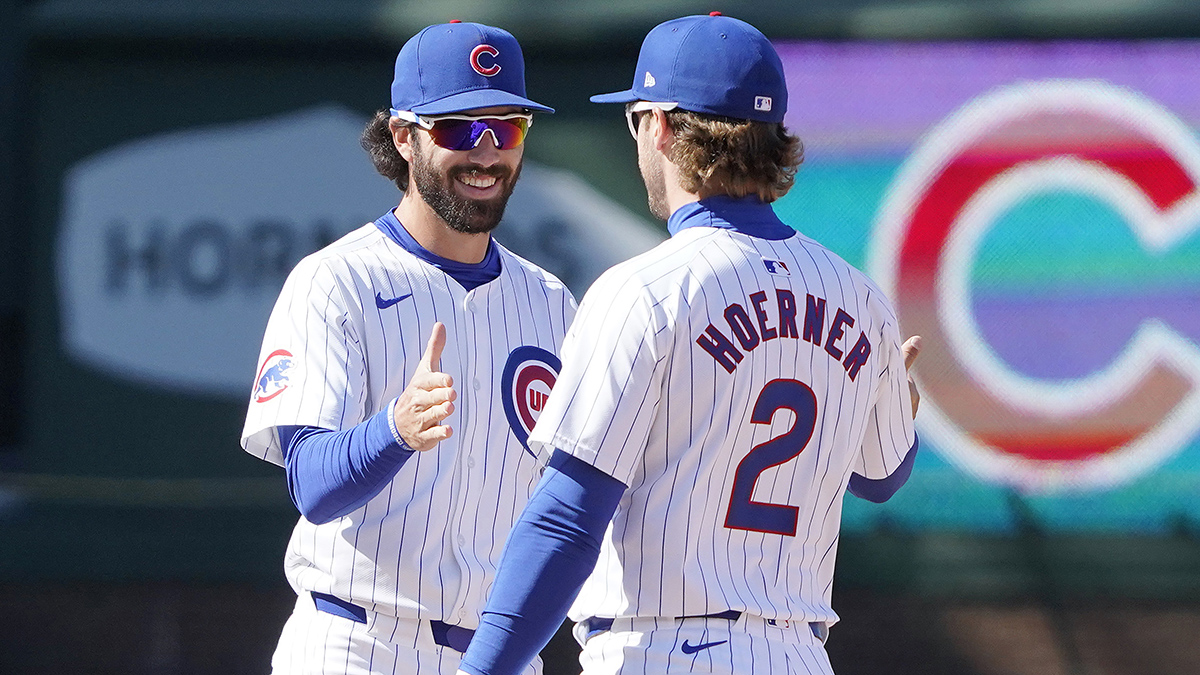ANAHEIM, Calif. — Mookie Betts ripped a leadoff home run to left field against the Angels’ Nick Tropeano on Thursday night, the right fielder's sixth homer of the season. He added a double down the line to left in the eighth inning, making him 7-for-13 in a three-game sweep of the Angels.
On Wednesday, a day after rocking three home runs in one night, Betts was asked if he believes in the concept of entering "the zone" at the plate.
"I think it’s more of just your focus is raised and you feel good," Betts said. "Something more of that vs. like a zone. I guess you kind of get to a point where everything you hit seems to be a hit, or seems to be a home run, or what not. But I think it’s just you’re focused more, and you’re just doing the right things more, really."
The majors' best hitter to begin the 2018 season, Betts does so many things right. How he maintains his stroke is a group effort predicated on a simple idea for an otherworldy talent.
"Mookie’s an athlete. Mookie drives on feel," hitting coach Tim Hyers said. "He’s not your guy that’s like, 'I do it this way,' and he can explain, 'I do it with X, Y, Z.' He’s more of, 'I feel this way, it feels good to me.'"
Betts is pulling the ball at a particularly high rate, higher than he ever has. But pelting left field is not a new, defined approach. Both Betts and Hyers said Betts is simply reacting to pitch location. (Betts did note that he does not make his living by going the other way.)
“They’re pitching him a certain way, and he’s taking advantage of it to the pull side,” Hyers said. “Talk to me a month from now, and they might have a different approach to him."
Boston Red Sox
By then, Betts’ swing will likely look a little different than it did in Anaheim. Fluidity is central to Betts’ existence in baseball, not only in his strides across the outfield, but in his daily approach in the box. Similar to a pitcher who adapts to the stuff he has on a given day, Betts moves between different versions of himself at the plate — even if the changes are slight.
“You try and be the same every day,” Betts said. “But nobody wakes up and does the same thing every day. So, you have a little tweak here and there, and if you’re just not doing something today — it’s kind of like golf. You know, you hit a slice, you’re slicing the ball today. Just for that day, play the slice. Then, the next day may change.”
That mindset is notable because it sounds counterintuitive. Hitters spend day and night in the cage to achieve some sort of ideal, or so it long appeared. Rarely, if ever, is the ideal swing described as mutable inside a given day. Hitters talk about adapting to pitchers or game situations, but not about adapting to their own feeling at the plate.
J.D. Martinez is the scientist who reverse engineers every result. Betts is the artist who knows which paints work together and which do not, but may not always know why. In 2018, Betts' understanding of his art is growing along with his output.
Teammates for two months now, Betts and Martinez chatted about their swings during batting practice on Wednesday afternoon. They talked again later that night, in the dugout after Martinez homered to the opposite field on a pitch at his ankles. (That conversation may not have been educational, however. After the game, Martinez joked he should not have swung at the pitch.)
They are as different as learners as they are batters, but Martinez and Betts have taken to each other quickly.
“What makes him so good are his hands,” Martinez said. “And I tell him that, I’m like, ‘Dude, don’t — if someone ever tells you to change your hands, tell ‘em to kick rocks. Because that’s what makes you, you.’
“He’s always asking questions, man. He’s always asking me, 'What are you trying to do with this pitch? What are you trying to do with that? How’d you get the ball this way, how do you get the ball in the air?’
“He wants to learn, which is cool, because he’s always been the guy to go up there and just hit. It’s cool, I respect that because … you’re always trying to get better, and that’s what I see in him.”
Martinez obsessively reviews video to the point that he has had to tell himself to step away. Betts reviews footage of his at-bats, but in a more deliberate fashion.
“There’s an art to watching video,” Betts said. “You have to learn how to watch video, what you’re looking for. If you’re just looking at video, looking at the big, broad picture, then you kind of get yourself in trouble. But if you kind of narrow in on certain somethings, then that’s how you kind of clean yourself up.
“Looking at just the swing. I mean, that’s pretty much it. Usually my timing is pretty close to the same all the time. I do a lot of the same movements. But the swing is different sometimes. Sometimes I swing down, sometimes I swing up, whatever.”
Martinez hasn’t exactly broken down Betts’ swing frame by frame, but he does regard Betts as somewhat atypical.
“You know, I never really got to sit there and study him and watch his swing,” Martinez said. “But being around him and seeing how athletic of a hitter he is, really, something that kind of just caught me, you look at [him] mechanically … he does a lot of things differently than most great hitters do.”
Martinez, perhaps a bit of a mad scientist — and definitely a candidate to become a hitting coach someday — didn’t elaborate at length.
“That’s a whole ‘nother topic,” Martinez said. “Just compare him to some of the best hitters. And see what you see.
“Just the way his legs work … His legs are really different.”
(When asked, Betts wasn’t sure exactly what Martinez was seeing, which probably speaks to their different consumption of hitting techniques more than anything else. “I’ve heard, ‘Where does the power come from?’” Betts said. “Other than that I haven’t really heard unorthodox.")
Regardless, Martinez was emphatic: the message to Betts is to stay true to himself.
When he talks to Hyers, Betts highlights the importance of his legs being “underneath” him. Betts will say that he feels calm in the batter’s box, or grounded. Or, he will say that he does not.
“And that’s his terminology,” Hyers said. “And when he keeps his stride length in order, not too far, and keeps everything underneath him, that’s when he lets the electric hands work.”
Overall, Hyers did not see Betts as unconventional as Martinez did, but Hyers noted Betts has more moving parts than some, particularly as he loads. (Watch his hands.) Betts has particularly loose shoulders, Hyers pointed out.
Either way, for a hitting coach, communicating with a “feel” hitter doesn’t sound like the easiest task. But a proclivity for “feel” does not preclude one from communicating well, and Hyers said Betts is successful conveying his thoughts.
“If he feels things get off line, just let him talk and [describe] what feels different," Hyers said. "And you just kind of start to hit those target areas where he feels uncomfortable. It’s more, we just talk through things, instead of you going, ‘OK, this is X,Y, Z.’”
Betts said Hyers does a strong job of using key words and terms, triggers to help Betts remember how he felt at a certain point in time. Baseball's best hitter to begin the 2018 season needs to do, not see.
“Always a feel for me,” Betts said. “I can look at it and mimic something, but if it doesn’t feel right, then I kind of don’t trust it."


